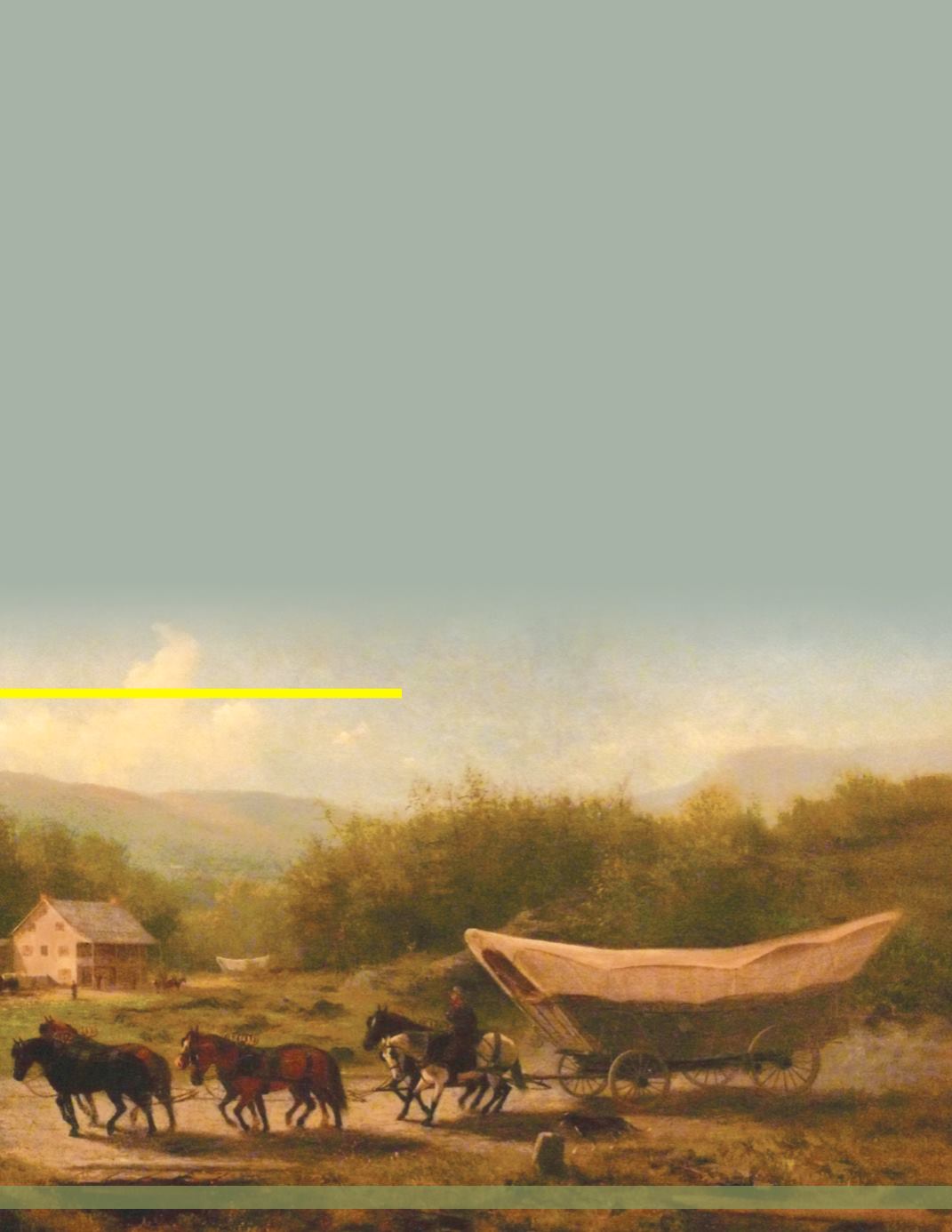
Enter the ConestogaWagon
Such a wagon was found near Lancaster.
Because it was built and used by the Pennsylvania
Dutch farmers in the Conestoga River Valley, it was
called the
Conestoga wagon
. The Conestoga wagon
became themost important land trade vehicle of its
time. It was the only wagon strong enough to carry
supplies and trade goods, called
freight
, to the
pioneers who settled Pennsylvania’s frontier region.
In addition, the Conestoga wagon was responsible
for the development of better roads.
Pulled by teams of six to eight Conestoga draft
horses, one Conestoga wagon could haul between
three to five tons of freight. The heaviest load ever
hauled by a Conestoga was recorded to be seven
tons, or 14,000 pounds. Trains of wagons, much like
our railroad or truck transport systems of today, left
places loaded with goods for eastern or western
settlements.
During the Conestoga era, there were few
bridges over rivers.
Ferryboat
crossings were started
in some locations to float wagons across rivers on
large rafts. One famous crossing on the
Susquehanna River was called Harris Ferry, near
present day Harrisburg. Travel by Conestoga wagon
became so popular that wagon drivers had to wait
several days for their turn to cross the river.
The Conestoga wagon is often confused with the
prairie schooner
, a vehicle later used to transport
thousands of settlers to western states. However,
the prairie schooner was amuch lighter, stripped
down version of the Conestoga wagon. It was not
sturdy enough for hauling heavy freight.
Trade was encouraged in Pennsylvania by the
building of roads. Around 1800, a stone surfaced
road was built between Philadelphia and Lancaster.
To help cover the $500,000 cost of building the
road, travelers had to pay a
toll
(money) at the
pike
,
or gate. When this was done, the
tollgate
would be
turned allowing travelers and traders to continue on
the
turnpike
. If sheep, hogs, or cattle were using the
road, a farmer would pay somuch per animal. That
is how the word turnpike got itsmeaning, by paying a
toll at the pike!
The stone road between Philadelphia and
Lancaster was one of the first all-weather roads in
our country. Later, it was built across the Allegheny
Mountains to Pittsburgh. However, in the early
1800s, most turnpikes were nothingmore than
crude, dirt roads that were cleared of tree stumps
and large rocks. By 1832, our state had 3,000miles
of turnpike roads, more than any other state.
There can be no denying that the Conestoga
wagon was a spectacular success story. The vehicle
was responsible for improving roads as settlers
opened the frontier regions to Pittsburgh and
throughout the state.
The Conestoga became themost important land trade
vehicle of its time period. It was the only wagon strong
enough to carry heavy freight.
62
Understanding Pennsylvania


